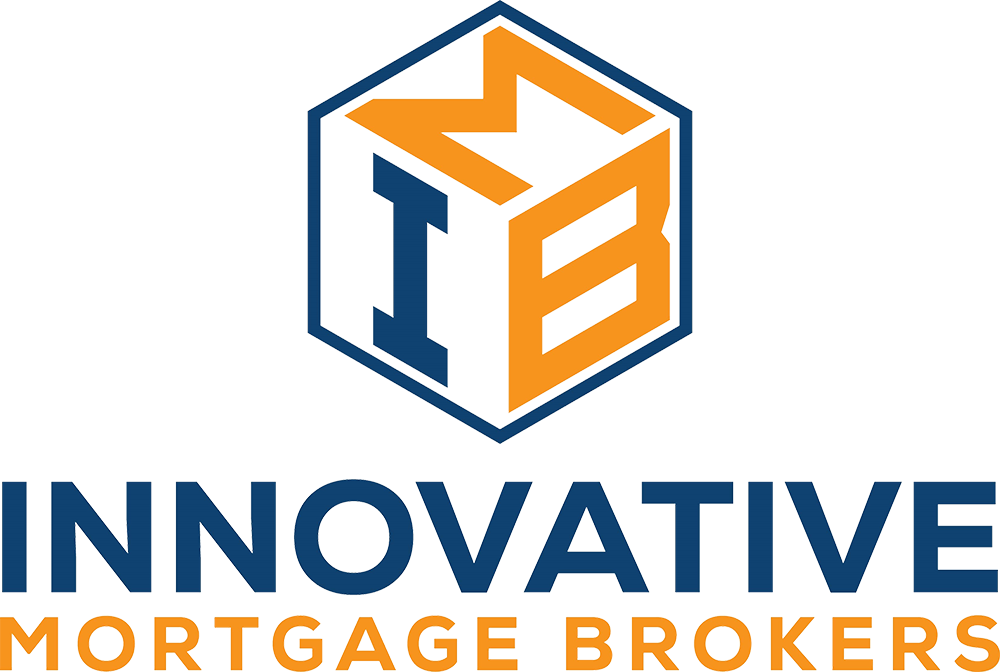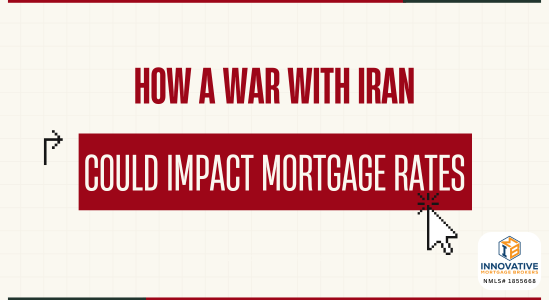FHFA Opens Door to Cryptocurrency in Mortgage Risk Assessments: What It Means for Borrowers and…
10 Key Mortgage Terms Every Homebuyer Should Know
Purchasing a home is a significant milestone in anyone’s life. However, the process can often seem overwhelming, especially when it’s filled with complex jargon that can be hard to understand. At Innovative Mortgage Brokers, we believe that knowledge is power. That’s why we’ve compiled a list of seven key mortgage terms every homebuyer should know.
Amortization
Amortization is a fundamental concept in the world of finance, particularly when dealing with home loans. It refers to the systematic process of settling a mortgage or any form of loan over a predetermined period through consistent, regular payments. Each payment you make is then divided into two essential parts: a portion that covers the interest accrued and another that reduces the principal loan amount.
This method ensures that over time, while you’re making payments, you’re gradually lessening your outstanding debt until it’s completely paid off at the end of your loan term. An amortization schedule provides a detailed breakdown of how each payment is allocated and can be an invaluable tool for financial planning.
Understanding amortization is crucial because it directly impacts how much you pay over the life of your loan For instance, during the early years of your mortgage, a significant part of your payment primarily goes towards the interest. However, as time goes on and the principal balance decreases, the interest portion of each payment becomes less while the principal portion increases.
In essence, understanding and utilizing the concept of amortization can provide you with a clear roadmap to home ownership, helping you know exactly where your money goes every month and how much longer it will take to fully own your home.
APR (Annual Percentage Rate)
The Annual Percentage Rate (APR) serves as a more holistic measure of the cost of borrowing money compared to the interest rate. While the interest rate merely represents the cost of borrowing the principal loan amount, the APR delves deeper, encompassing an array of additional costs associated with the loan.
Essentially, the APR provides a broader perspective, offering a comprehensive view of the total cost of credit on an annual basis. It includes not only the interest rate but also points, lender fees, and other charges that you may have to pay to get the loan. This could range from loan origination fees to private mortgage insurance, or other closing costs.
This distinction becomes crucial when comparing loan offers. Two loans may have the same interest rate, but different APRs—indicating different costs associated with each loan. Therefore, when evaluating loan options, it’s important to compare both interest rates and APRs to get a clear understanding of the overall cost.
Moreover, the APR can be particularly useful for borrowers to compare fixed-rate with adjustable-rate mortgages or to compare the costs of refinancing with different lenders. It helps borrowers see the true cost of their loan, providing a clear benchmark for comparing different loan products.
Remember, a lower APR generally means lower payments over the life of your loan. Therefore, understanding the difference between interest rate and APR can potentially save you thousands of dollars over the term of your loan.
In conclusion, while the interest rate forms a crucial part of the cost of your loan, it’s the APR that gives you the full picture, helping you make an informed decision when choosing a loan product.
Debt-to-Income (DTI) Ratio
The debt-to-income ratio (DTI) is a critical term in the loan approval process. Lenders use this ratio to compare your gross monthly income with your monthly debt payments. This assessment helps them gauge your ability to manage the payments you make every month.
Your DTI is calculated by dividing your total monthly debt obligations by your gross monthly income. This includes not just the mortgage payments, but also other recurring debts like credit card payments, car loans, student loans, and other financial obligations.
Different lenders and programs have different thresholds for acceptable DTI ratios. A lower DTI indicates that you have a good balance between debt and income. That’s a positive sign to lenders because it suggests you’re less likely to have trouble making your mortgage payments. Conversely, a high DTI can be a red flag for lenders, as it might indicate you have more debt than you can comfortably manage.
Therefore, understanding and improving your DTI is crucial when applying for a mortgage. Reducing your debt and increasing your income are two strategies that can help lower your DTI.
Escrow
Escrow, in the context of mortgages, is a financial arrangement where your lender collects and holds a portion of your monthly mortgage payments in a separate account. This account, known as an escrow account, is specifically dedicated to covering your property taxes and homeowner’s insurance premiums.
This system ensures that these crucial expenses are paid on time and in full, safeguarding both you and the lender from potential risks such as tax liens or lapses in insurance coverage. It also provides the convenience of breaking down large annual or semi-annual costs into manageable monthly payments, making budgeting simpler for homeowners.
In essence, an escrow account serves as a financial safety net, adding an extra layer of protection and peace of mind to your home ownership journey.
Loan Estimate
A Loan Estimate is a crucial document that potential homeowners receive from a lender when applying for a mortgage. Mandated by the Consumer Financial Protection Bureau (CFPB), this form is designed to provide you with a clear and concise summary of the essential information about the loan you’ve applied for and the cost.
The Loan Estimate is not a loan approval or denial; it’s simply an estimate of what your loan terms and costs might be should you decide to move forward with the loan.
It’s a critical tool for comparing loan offers and making an informed decision about which loan best suits your needs.
PITI (Principal, Interest, Taxes and Insurance)
PITI, an acronym in the mortgage industry, stands for Principal, Interest, Taxes, and Insurance. These four components make up your monthly mortgage payment. Understanding each element is essential for homebuyers to manage their finances effectively.
The principal refers to the portion of your monthly payment that reduces the outstanding balance of the loan. Interest is the cost you pay to borrow money – it’s calculated based on the interest rate set by the lender. Taxes refer to property taxes, which are typically assessed by local governments and can vary widely based on location. Lastly, Insurance includes both homeowners’ insurance (which protects against damage to the property) and, if required, private mortgage insurance (PMI-which protects the lender if you default on the loan).
Note that PITI does not include Homeowners Association (HOA) fees. These are typically paid separately and directly to the HOA. HOA fees cover the maintenance of common areas and any amenities provided by the community, like a pool or gym. So, while they are a part of the overall cost of home-ownership, they are not included in the traditional PITI calculation.
Pre-Approval
A pre-approval letter issued by a lender signifies that you have been preliminarily approved for a specific mortgage amount. This pre-approval is based on an examination of your financial information, including your income, assets, debts, and credit history.
This letter serves as a testament to your financial credibility and buying power. It gives you a clear understanding of what you can afford, allowing you to focus on homes within your budget. Moreover, it puts you in a stronger negotiating position when dealing with sellers, as it shows them you are a serious buyer with secure financing.
In a competitive real estate market, having a pre-approval letter can significantly enhance your chances of having your offer accepted. Sellers often prefer buyers who have pre-approval letters as it reduces the risk of the sale falling through due to financing issues. Thus, obtaining a pre-approval letter can be a strategic move in your home buying journey.
Equity
Home equity is essentially the portion of your home that you truly own. It’s the difference between your property’s current market value and the amount you still owe on your mortgage. For instance, on a purchase, equity is the amount of your downpayment. On a refinance, equity is the difference between the value of the home, and the mortgage balance. This value can change over time as you pay down your mortgage and as the value of your home fluctuates with the real estate market.
Home equity represents your financial stake in your property and is a critical part of your overall financial wealth. It can be used in a variety of ways including being leveraged for a home equity loan, or refinancing and pulling cash out (cash out refinance) which allows homeowners to borrow money using their equity as collateral. This can be beneficial for funding large expenses such as home renovations, education costs, or debt consolidation.
Loan-to-value (LTV) Ratio
The Loan-to-Value (LTV) ratio is a financial term used by lenders to express the ratio of a loan to the value of an asset purchased. It’s essentially a measure of risk. This concept is commonly used in mortgage lending, where the LTV ratio is calculated as the mortgage amount divided by the appraised value of the property. The higher the LTV ratio, the riskier the loan is for a lender.
A lower LTV ratio is typically seen as less risky to the lender. This is because there is a larger equity cushion if the lender needs to foreclose on the property and sell it due to a default on the loan. For example, if a homeowner has an 80% LTV ratio on their mortgage, this means they have a 20% equity stake in their home. If the homeowner defaults on the loan, the lender can usually recover their money by selling the home. Conversely, a higher LTV ratio might require the borrower to purchase mortgage insurance to offset the risk to the lender.
Points (Discount Points)
Paying points, also known as buying down the rate, is a strategy where you pay an upfront fee to lower the interest rate on your mortgage. While this can save you money over the life of the loan due to lower monthly payments, it’s not always the best decision.
If interest rates decrease after you’ve bought points and you decide to refinance, you may end up losing money. This is because the upfront cost of the points could outweigh the savings from the lower interest rate, especially if you haven’t held the original loan for very long. Essentially, the points you paid become a sunk cost that you can’t recover when you refinance.
It’s important to calculate your break-even point before deciding to pay points. The break-even point is when the total amount saved through lower monthly payments equals the upfront cost of the points. If you plan to sell or refinance the home before reaching this break-even point, paying points might not be financially beneficial.
About Us
At Innovative Mortgage Brokers, we guide you through the home buying or refinancing process, whether you’re in Pennsylvania or Florida. We work with a large network of lenders and have access to a variety of loans, which increases the chances of finding the best loan for your unique needs.
We handle all the legwork, from gathering documents to managing the application process and negotiating terms. Our goal is to simplify the process for you, saving you time and potentially a lot of money.
Knowledge is the key to a successful and stress-free home buying experience. By partnering with Innovative Mortgage Brokers, you’ll have a team of experts by your side, ready to guide you every step of the way. Let’s turn your dream of homeownership into reality.





